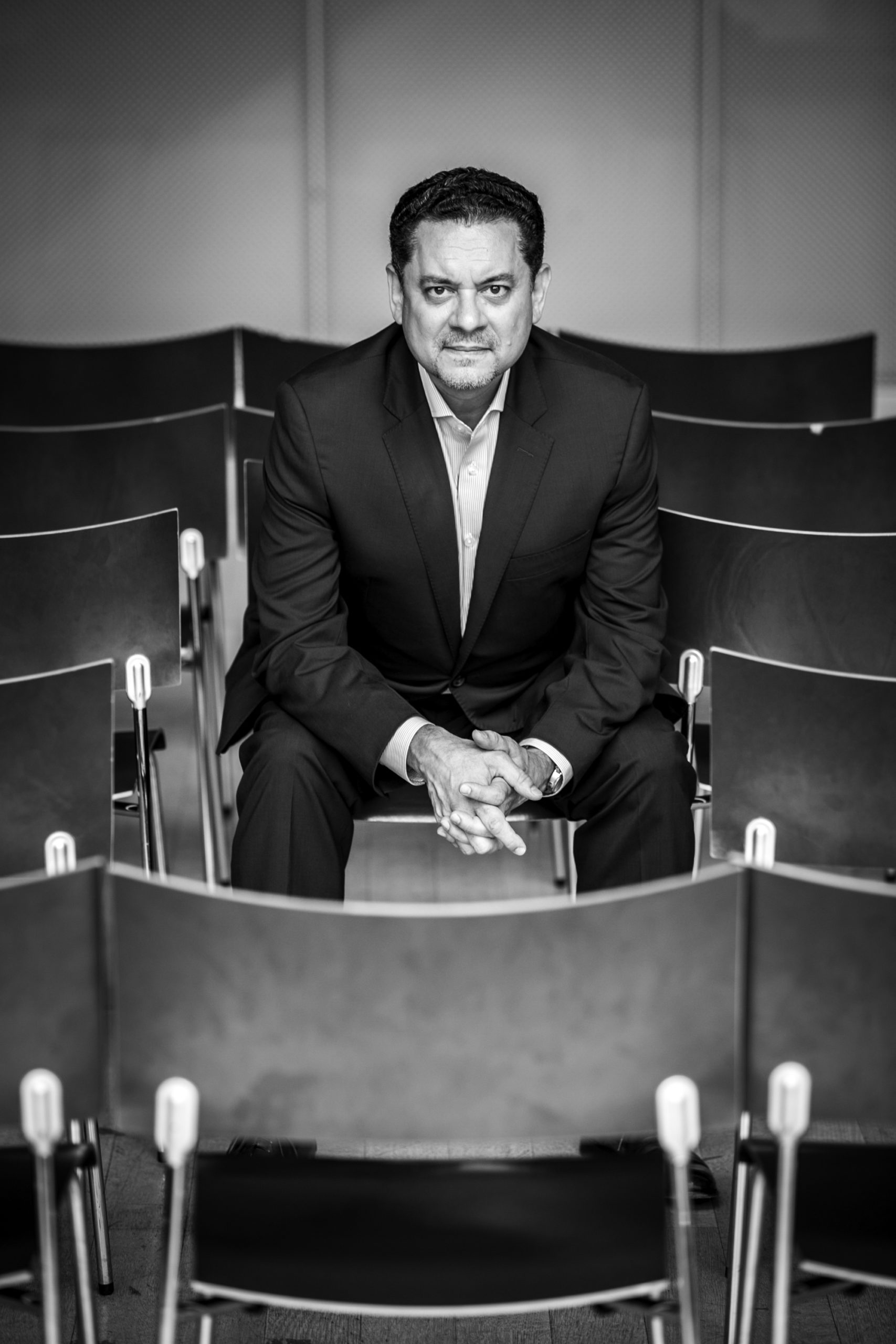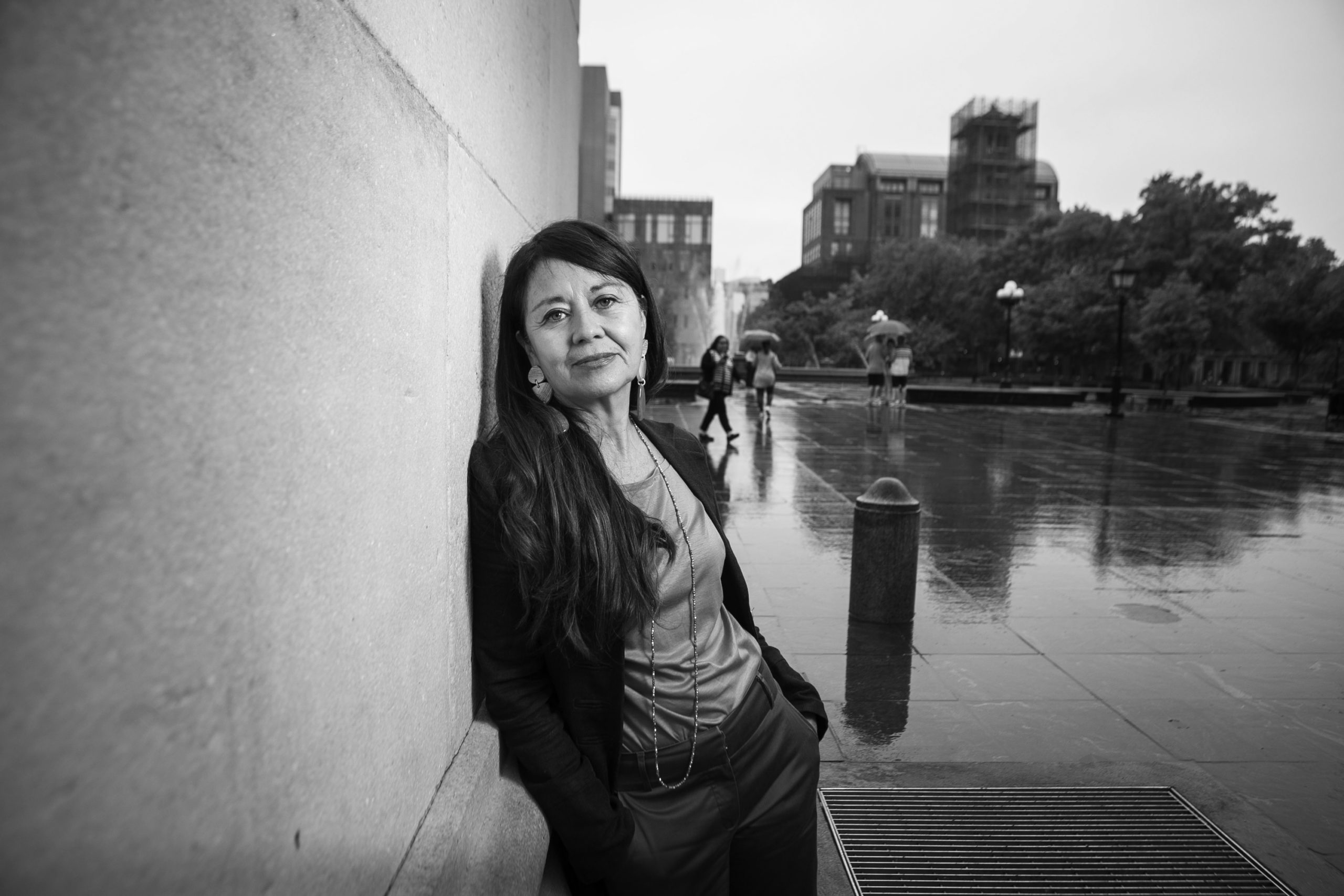Legacy ofViolence
Central and South America in the Wake of U.S. Interference
Researchers: José Luis Morín, Claudia Calirman, Pamela Ruiz, Marcia Esparza
Author: Sam Anderson
For more than 50 years, the United States engaged in a variety of political and military interventions in Guatemala, Honduras, El Salvador, Panama, Brazil, Chile, and other countries in the southern hemisphere. While each intervention was unique in the kind of damage it wrought on the local population, many have resulted over the long term in the systematic destabilization of government coupled with a legacy of violence and military dictatorship that has variously affected the lives of South and Central Americans for decades.
To uncover the causes and effects of such wide-reaching devastation is no easy task, but several professors and students at John Jay have made this research their life’s work. Among them are José Luis Morín, Claudia Calirman, Pamela Ruiz and Marcia Esparza.
Suing for Justice
This past December, John Jay’s Latin American Studies Department Chair José Luis Morín found himself in Panama City meeting with individuals affected by the 1990 United States invasion of Panama, when the U.S. government sent troops to force out President Manuel Noriega. Morín sought out individuals who suffered direct damages during the invasion, on whose behalf he had filed a lawsuit against the U.S. seeking reparations. Morín had been in the thick of the 1990 invasion; visions of bombed out apartment buildings and mass graves, the result of indiscriminate bombing of civilian neighborhoods by U.S. troops, are not easily forgotten.
“It was literally a war zone,” he recalled. “The smell of death was in the air. The U.S. military was everywhere and people were being arrested at the drop of a phone call.”
The lawsuit Morín filed describes the atrocities committed against the 315 plaintiffs on an individual basis: a 69-year-old woman killed by U.S. military fire while being driven to the hospital in a Red Cross vehicle; a university student who went missing one afternoon and whose body was later discovered in a mass grave; and the wife of a local attorney killed at home by missiles fired from a U.S. helicopter. Her husband, a Mr. Salas, was among the lead petitioners in Morín’s lawsuit. He would go on to document his wife’s death, alongside many other horrific accounts, in their efforts to find justice for the invasion’s victims.

José Luis Morín
“My recent visits were to go into those communities in Panama and speak to the individuals and families who were part of the case, and explain what this petition says and how important it is. But you can’t have a conversation about compensation until you first have a decision that the U.S. indisputably violated human rights.”
That decision has finally been made. According to the Inter-American Commission on Human Rights, which issued a decision in December 2018, the U.S. government is solely responsible for the deaths of Panamanian civilians during the 1990 invasion, and it is responsible for compensating the victims for those damages.
“What makes this particularly relevant, and so critical to the work we do in this department, is having our students learn about the history of Latin America and how the U.S. played such an integral role in how these countries developed. It’s important to understand that link,” said Morín.
Art Under Fire
The U.S. has justified interventions by the fight against the spread of communism. But “democratic” U.S.-backed leaders have more often than not turned out to be authoritarian dictators with little regard for democratic institutions. This was the case in Brazil, where a right-wing authoritarian government ruled from 1964 to 1985.
Dictators across the globe share many qualities in common, chief among them the suppression of creative expression viewed as subversive to government rule. Brazilian artists were frequently persecuted by the Federative Republic of Brazil, but despite this, a thriving art scene persevered, ultimately transforming into the pulsing heartbeat of a radical resistance movement.
Claudia Calirman, associate professor of art and music, is an expert on Brazilian art under military regimes. According to her research, much of this art was expressed in mediums specifically designed to thwart detection. These forms included body art or what was called “ready mades,” where artists took everyday objects, like bank notes or Coca-Cola bottles, and modified them with subversive or critical messages that would then be circulated to the public while keeping the artist’s identity secret.
“People say there was a void at that time, and nothing was produced,” said Calirman. “But that’s not true. Artists were still working and creating such interesting art, and that’s what my first book, Brazilian Art Under Dictatorship, uncovered.”
Antonio Manuel is one of the artists Calirman documents in her book. In the 1970s, he wanted to show his own body as a living exhibition at the Museum of Modern Art in Rio de Janeiro. But the museum refused to give him a space. So, he took off his clothes and marched naked up to the third floor of the museum, where he caused outrage among the curators.
“Nudity was extremely prohibited by the morals of the church and the state,” Calirman explained, “so he went against the authoritarian order and the rules of the institution. The museum was closed and Manuel had to hide away for a few weeks. He was prohibited from going back to the premises for two years. It was a very daring act at the height of an authoritarian regime, so he became a symbol of that period.”
Calirman’s latest work and forthcoming book deal with feminism in the Brazilian art scene and how the term itself was not used during the 60s and 70s, despite its popularity in the U.S. Even though art was being created during that time period that could be termed “feminist,” it wasn’t until later that Brazilian women began to identify with the feminist movement.
“For the left, some issues related to feminism were personal and not collective. And for the conservative right, they were not interested at all in women’s liberation. So there was no support in place for that kind of discourse,” Calirman said. But she noted that that is changing significantly today, as Brazilian women begin to articulate a feminist vision of the future.
In addition to the book that Calirman is writing on this subject, she is also producing a Spring 2020 exhibit at John Jay’s Shiva Gallery that deals with the current censorship of art in Brazil. She previously curated Basta! Art and Violence in Latin America, which was on display at the Shiva Gallery in 2016.
Uncovering Violence
Further north, the link between U.S. intervention and the destabilization of democracy is also expressed in the explosion of gang violence. The notoriously violent MS-13 gang has become the centerpiece of the Trump administration’s culture wars against the Latinx community, but despite frequent media coverage, there is much that remains misunderstood. Doctoral candidate and Fulbright scholar Pamela Ruiz spent the last two years studying the evolution of MS-13 and Barrio-18 in the Northern Triangle of Guatemala, Honduras and El Salvador.
Part of Ruiz’s work is to classify certain gangs in order to create a system of targeted enforcement. For example, there are primarily-urban gangs like MS-13 that are distinct from narco-trafficking groups like the Sinaloa Cartel, typically located in rural areas and near borders. It’s important to distinguish between these groups because the more specifically a criminal group is defined, the easier it is for law enforcement to access funding to combat that group’s activities.

Pamela Ruiz
In Guatemala, for example, a government task force on extortion discovered that only 10 to 20 percent of extortions were actually committed by gang members. The rest were committed by non-gang-affiliated people impersonating gang members. “It completely changes the narrative of whether these problems are caused by gangs,” said Ruiz.
For her dissertation, Ruiz mapped out the locations where crimes associated with gang members occurred. “The perception is that all this violence is attributed to gangs,” she explained, “but when you go into a country and interview people, you discover that it’s different groups contributing to violence in different areas.”
Because Ruiz’s research is quantitative, it’s filling an important gap in the region. “One of the biggest critiques that people working in this field have is the lack of quantitative statistical data,” she said. “If you have reliable data to work with, you can refine your policies or create new policies that are closely targeting what you want to reduce whether it’s violence, immigration or corruption.”
Documenting Dictatorship
Dr. Marcia Esparza, an associate professor of sociology and expert on genocide, state crimes and human rights violations, would argue that remembering past atrocities and commemorating the victims of dictatorial governance in the southern hemisphere is equally important as addressing present violence and corruption. Much of Esparza’s work has focused on the impact of these crimes in Guatemala, Chile and elsewhere. She argues that without an understanding of history, progress remains elusive.
“If we don’t look at the long-term footprints of militarization on the local level, we cannot talk about democracy or democratic institutions,” she said.
Following a genocide in Guatemala in which 200,000 civilians—many of whom were indigenous Maya people—were killed, tortured or disappeared, Esparza traveled to the country to conduct interviews with survivors as part of a United Nations commission. She has conducted similar research in Chile and Spain, which inspired her to found the Historical Memory Project.

Marcia Esparza
“It’s part of my commitment—ethical and moral—to the victims,” she said. “I was struck by all the horrors that people went through. When I returned to New York and joined John Jay almost 20 years ago, I realized there was not much discussion about the genocide of these indigenous people.”
The Historical Memory Project draws on primary sources like photographs, letters and other historical documents to memorialize the victims of genocide and violence. The archive encompasses 10 collections of materials like digital prints, posters, books, audio and other materials that highlight both horror and hope, both abuses and resistance. “We don’t only want to focus on massacres and genocides—we also want to show the resistance, because people didn’t just sit idle while violence was happening,” Esparza said.
Often, it is Esparza’s students who dig through the archives to put together exhibitions. She explained that many students at John Jay have a Latinx background, but they are not always aware of the history of violence suffered in some of their ancestors’ home countries.
“Our students are often second-generation immigrants whose parents came here because of this violence,” she said. “We’re trying to transmit this memory to the diaspora, so they can keep it alive.”
This shared history of interventionist foreign policy and authoritarian rule has created a spider’s web of mutual entanglements that persist to the present day. “The most obvious factor is the role of the United States,” said Esparza. “There’s a long-term history of U.S. invasion and intervention in Latin America and a lot of the methods used to suppress political opposition were the same—torture, disappearances, propaganda—so you start to see patterns.”
With dedicated work by historians, legal scholars and researchers on the ground charting the causes and effects of this interventionism, we are brought one step closer to justice for the victims of past genocides and peace for generations to come. JJ
Feature: Photo by Jonathan Moller. Two sisters watch as the remains of their mother and four small siblings are exhumed. The sisters were present that day in August of
1982 when soldiers shot their loved ones, but they managed to escape. Nebaj, Quiché, Guatemala, 2000
Sidebar Photos: Pap Studio
